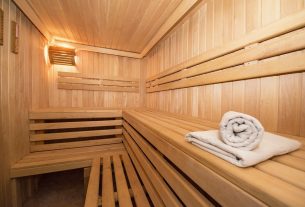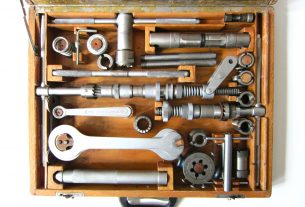The rounded roof is built according to the same principle as a pitched roof but is quite different from the third type of roof, the flat roof. A framework supports all the elements that make up the rounded roof:
– The insulation.
– The under-roof screen.
– The space under the roof.
– The ventilation.
– The roofing.
Advantages of the rounded roof
The rounded roof now enjoys a good reputation, especially among the followers of ecological construction. The rounded roof has several advantages:
– Aesthetics:
◦ roundness;
◦ the softness of shapes;
◦ less angular.
– Original:
◦ unusual architecture;
◦ still little used in private homes.
– Adaptability :
◦ great possibility of shapes;
◦ the choice of style leaves room for creativity.
– Trend: this type of roof is fashionable because of its design :
◦ curved;
◦ uncluttered;
◦ innovative.
– Creates more living space :
◦ allows you to occupy more attic space;
◦ one is less bothered by the slope of the roof;
◦ as opposed to a sloping roof under which you often drive with the roof down.
– Better thermal performance. The thermal losses of a house depend on :
◦ the surface of the external walls, including the roof;
◦ the habitable volume.
Therefore, the greater the external surface area in relation to the habitable volume, the greater the heat loss.
For the same living space, a rounded roof induces a smaller external surface area than a sloped roof and a flat roof, thus reducing energy wastage.
The main forms of rounded roofs
Mainly present on public buildings, the rounded roof is now beginning to appear in private homes. There are now many forms of rounded roofs, as the evolution of building materials offers an adaptation to the creativity, tastes and design of the moment.
Here are the main forms of rounded roofs that can be found in architecture:
– The dome:
◦ is the most classic form of the rounded roof;
◦ generally consists of a spherical vault made of masonry;
◦ several types including the bulbous dome, the gable dome which is divided into quarters separated by ridges.
– The spire or turret :
◦ of conical shape;
◦ pointed at its apex;
◦ surmounts a cylindrical-shaped building, usually a tower.
– The simple curvature:
◦ the roof has two gable roofs which, instead of meeting at an angle, join together in a curve.
This can be :
◦ more or less acute;
◦ in the middle of the roof or offset.
– The simple curve with cap:
◦ This rounded roof overhangs more widely on one side of the house, forming a covered terrace because of the roof overhang.
– Characteristics of the rounded roof:
◦ it has a single-sided mono-pitch roof;
◦ the single slope is not straight but more or less curved.
– The roof has a curved overhang:
the roof structure can then be sloping or rounded, but the roof overhang forming a covered terrace forms a rounded shape.
– The double curve:
the roof is made up of a single section, then forms a sort of inverted S or not. Thus, from the top to the bottom of the roof, it undergoes two curves.
Good to know: other curved roof shapes can be observed or created, imagination seems to be the only limit.
Rounded roof: the materials
The rounded roof is composed of several elements: openings, ventilation, evacuation. It is important to also look at the different shapes, materials and advantages of this roof.
Like the pitched roof and the flat roof, the rounded roof is made up of several layers, each of which can be built with several different materials.
The framework of the rounded roof
The frame may be:
– Solid wood: That’s the classic material;
– metal;
– concrete web: the elements of the framework are made of concrete, then joined together to form a vault;
– in glued laminated wood: a technique that is increasingly used today in private homes, because glued laminated wood is easy to handle and allows you to easily create rounded beams.
The insulation of the rounded roof
In order to ensure thermal comfort inside the house, and thus avoid wasting energy, the roof is insulated, because poorly insulated roofs account for 30% of the house’s energy loss.
For a rounded roof, one can choose insulation between:
– glass wool, sheep’s wool, rock wool ;
– wood fibre;
– polyurethane;
– cellular glass;
– polystyrene;
– cellulose board, cellulose wadding.
An under-roof screen is installed to complete the insulation and make the rounded roof even more protective. It protects the roof, the structure of the house and the attic:
– from snow;
– from dust;
– sand;
– pollen;
– small animals.
As with the pitched roof, there is a choice of different materials for the under-roof screen:
– asphalt sheets;
– high vapour permeability screen;
– micro-perforated synthetic films;
– reflective screens;
– flax fibre.
The rounded roof covering
On the roofing side, the particular shape of the rounded roof requires the installation of a material that can adapt to the rounded shape of the roof :
– Wood;
– small tiles;
– Zinc;
– sheet metal.
Today, the most commonly used roofing materials for rounded roofs are sheet metal and zinc.
Rounded roof: two types of openings
A rounded roof cannot accommodate all types of openings. Indeed, its shape is not always adapted to the installation of a dormer window. Only a professional can tell you whether the installation of the opening you have chosen is technically feasible.
There are 2 types of openings on a rounded roof:
– The glass roof: part of the roof is replaced by a glazed area.
– The roof window.
Today’s professionals know how to create openings whose shape matches that of the roof.
Ventilation
Insulating the roof is not enough to guarantee the comfort of the inhabitants and the durability of the roof elements. It is, therefore, necessary to ventilate the rounded roof well so as not to generate a confined atmosphere that may lead to the development of :
– water vapour;
– humidity;
– mould;
– fungi.
As with the pitched roof, the rounded roof has an under-roof space between the under-roof screen and the roofing. This space is ventilated by the installation of :
– Hatches: they are laid in staggered rows over the entire surface of the rounded roof.
– Air inlets and air outlets, respectively at the bottom and top of the roof.
Water evacuation on a rounded roof
– As with a sloping roof, rainwater must be drained away by a specific system:
– the water runs off on the slope of the rounded roof;
– is collected at the bottom by gutters surrounding the entire roof;
– then is conveyed to the bottom of the house by downspouts.
This system prevents the water from:
– stagnating on the roof and running down the outside walls;
– splashing, soiling and damaging the walls.
If you wish, we can put you in touch with one or more roofing professionals. They will be able to give you a free and non-binding quotation.
Don’t forget to write down your comments below.



1 thought on “What Is Rounded Roof”